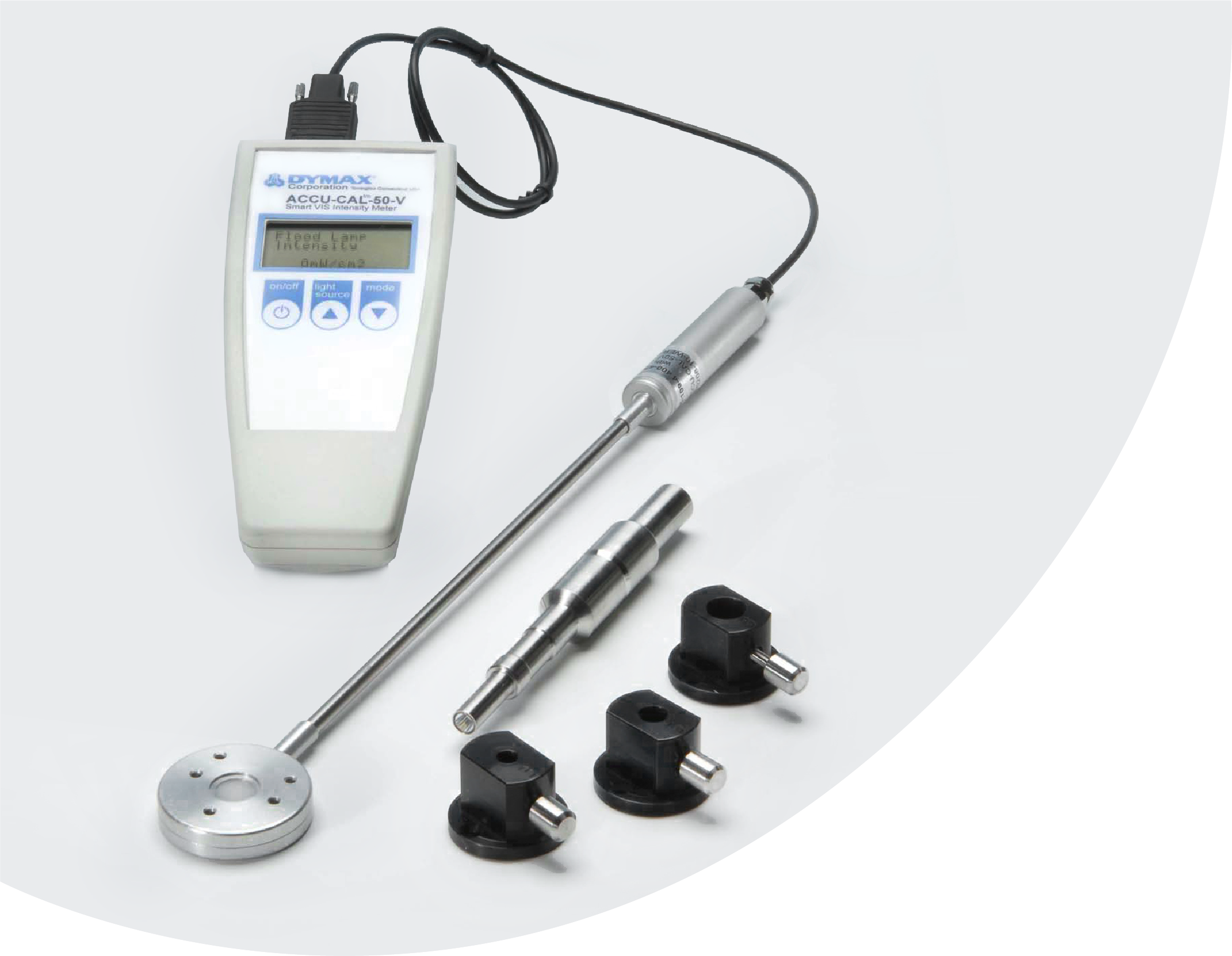UV 和 LED 辐射计的成功使用
辐射计是光固化过程中必不可少的组成部分,因为它有助于确定光固化材料的完全固化。它测量与特定波长的光相关的强度和/或能量。它还有助于提供安全的工作环境,因为它可用于确定是否有杂散的紫外线到达操作员或旁观者。由于辐射计是成功固化过程不可或缺的一部分,因此以下是如何正确使用它们:
1. 为您的系统选择合适的辐射计配置
不同的固化系统配置和应用需要不同类型的辐射计:圆盘式配置非常适合用于传送带和洪水室固化应用。手持式/棒式配置可用于某些传送带和洪水系统测量,但更适合点式和棒式末端固化系统。
2. 选择具有正确频率灵敏度范围的辐射计
固化系统发射的能量光谱范围很广,因此使用专门设计用于测量固化系统发射的相同光谱范围的辐射计非常重要。传统灯系统发射的能量光谱范围很广,涵盖光谱的 UV 和可见部分。LED 固化系统的频率发射范围要窄得多。
3. 小心操作辐射计
辐射计是精密仪器,需要小心操作。猛烈撞击或跌落会影响精度/校准,还可能对仪器造成永久损坏。
4. 校准辐射计
辐射计需要定期校准,通常每 6 个月到一年一次。校准时间应包含在特定辐射计的用户指南中。下次校准到期日期可在校准标签、校准证书或某些辐射计(例如 Dymax ACCU-CAL™ 160 ,它将出现在显示屏上。
5. 保持辐射计清洁
保持辐射计清洁非常重要,因为传感器表面沉积的碎屑会降低到达设备的能量。要保持此区域清洁,请用蘸有 >90% 异丙醇的柔软无绒布擦拭传感器。还要确保光导的发射端光学元件清洁,并且探测器没有松动。
6.确保一致性
两个校准过的辐射计相互比较时可能会出现 >10% 的差异。Dymax 辐射计根据受控标准进行校准,最大可接受偏差为 +/- 7.1%(通常 <3%)。建议每天只使用一个辐射计。
可重复测量方向:
斑点——一致的光导方向和形状(弯曲或笔直)
泛光灯和传送带 – 灯下位置一致
全部 – 一致/相同的辐射计传感器旋转位置方向
7.根据需要更换电池
辐射计通常由电池供电。根据需要更换电池以确保最佳性能。大多数辐射计都有低电量指示器。
8. 切勿更换探测器或适配器
探测器、仪表以及包含适配器的盒子均作为匹配套件进行校准,因此它们不能与其他仪表切换或共享。不匹配的套件可能会提供严重错误的测量结果。
9. 避免传感器过度曝光
传感器非常敏感,长时间暴露在高强度紫外线和高温下可能会损坏传感器。客户在辐射计测量过程中应使用小于 5 秒的曝光时间,尤其是在测量高强度光源时。


